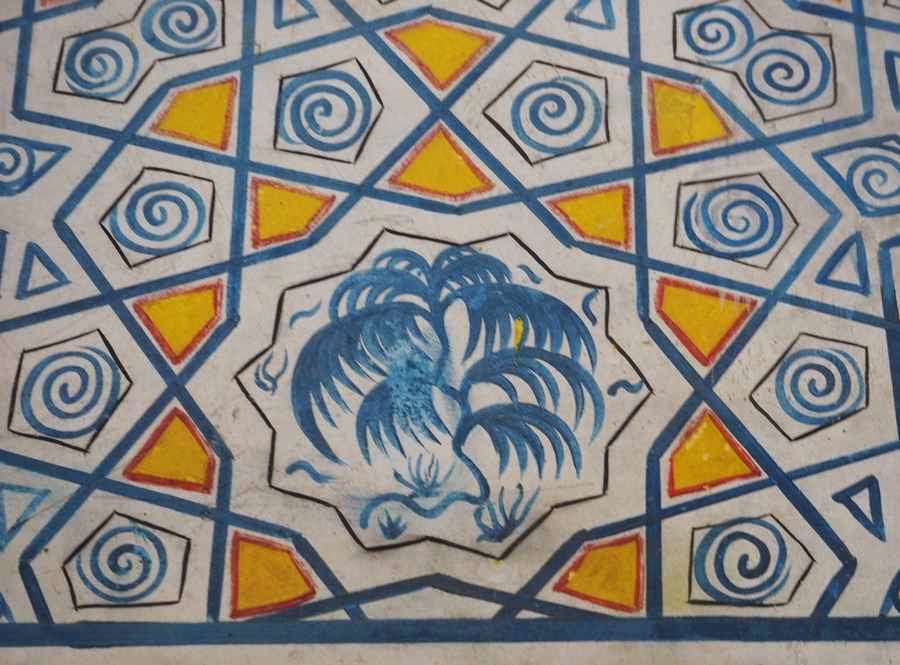We continued to Samarkand over a 1,700 m pass. There were boys selling bunches of wild tulips and the driver stopped to buy me a bunch. At the top of the pass we tried the wild rhubarb on sale at a stall but it was too cold, wet and windy to linger.
Alexander the Great was very impressed with Samerkand and it must have been a fabulously city for a long time before Ginghis Khan obliterated it in 1220. In 1370 Timurlane made it his capital and re-built it in grand style using artisans from all over his empire which stretched from Turkey to India. It is these 14th C buildings which bring people here today and which impressed Marco Polo. After Timurlane died his grandson Ulegbeg reigned for 40 years. He was a scholar and astronomer and we visited his observatory and interesting museum depicting his scientific work.
Samarkand has extensive parks together with mosques, madressahs and mausoleums galore. We are staying near the university and had lunch in a Uzbek equivalent of a fast food joint. We found the local beer store (actually 3 side-by-side). They do a roaring trade - we saw one customer buying 3 cases of vodka.
As usual we like wandering around the bazaars, although the few gypsies are annoying. There are also old women selling fine handknitted lace woollen shawls (Orenburg?) now for the photos:-
The Malika Prime in Samarkand with a good shower and a very good breakfast.
Wild tulips. They are as big as cultivated ones.
Ak Saray Palace, the 40m high ruins of the portal to what must have been an incredibly huge palace which Timur built for himself
Tilework at Ak Saray palace in Shakhrisabz
Kok Gombaz mosque in Shakhrisabz
The palm trees on the interior tiled walls were left by the Indian and Iranian designers.
Wild tulips for sale along the road.
Looking down a shady avenue to a seated statue of Timur.
Exquisite tiling in the Gur e Amir mausoleum where 2 of Timur's sons and 2 grandsons are buried. When the grave was opened in 1941 it was found Timur was lame and that his grandson Ulegbek had been beheaded.
Outside view of the famous Registan which has huge 14thC buildings on three sides
Another view of the Registan complex.
The Sher Dor Madressah has lions over the portal although they look more like tigers.
A musician demonstrating Central Asian musical instruments.There are many stringed instruments with various numbers of strings and also a flute.
Photograph of the Registan in the 19thC. Stalin started (or at least encouraged the restoration starting in 1930.
Giant marble Koran stand at Bibi Khanym mosque (She was the wife of Timur.
The remains of Ulegbeg's sextant. His observations were remarkably accurate.
Sorry this is out of focus but it shows he calculated the length of the year to within one minute.
Daniel's tomb still popular with Jews, Christians and Moslems. Timur brought his remains here from Susa (Iran) - for good luck!
Part of the 7thC Sogdian fresco at Afrosiab an older Samarkand.
Zoroastrian ossuary in the Afrosiab museum.
Market in Samarkand.




























Wonderful tiling patterns. The ridged blue dome in particular is amazing!
ReplyDelete